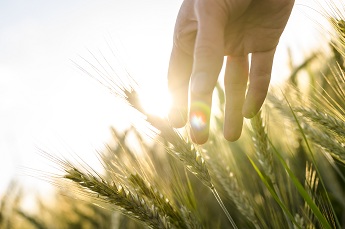New sensor system sniffs out mycotoxins in wheat

Related topics
Agriculture & Forestry Food & Healthy Diet Innovation SMEs Innovation in SMEs Belgium France Greece Hungary Italy Netherlands Poland Spain Sweden United Kingdom Food security, sustainable agriculture and forestry, maritime and martime inland water research and bio-economydate: 12/01/2015
Project: Rapid Biosensor for the Detection of Myc...
acronym: MYCOHUNT
See also: CORDIS
Contact: Contact
Mycotoxins are toxic substances produced by moulds. In agriculture, such moulds can infect a variety of crops, including wheat, barley, oats and maize. Their consumption can cause serious health issues in both humans and animals, ranging from minor ailments to organ damage and a compromised immune system. Before they enter the food and feed chain, heavily contaminated crops must be destroyed.
While exact figures are not available, world economic losses resulting from mycotoxin contamination are staggering. In 1998, estimated direct and indirect losses following a wheat epidemic in Hungary alone reached roughly €100 million.
Finding the culprit – fast!
In an attempt to speed up the detection process, the EU-funded MYCOHUNT project developed an innovative rapid biosensor for deoxynivalenol (DON) in wheat. DON is a mycotoxin most commonly formed in wheat, barley, oats, rye, and maize. During the flowering period, a fungus can invade the plant, and will then start to generate DON – a very stable substance that resists high as well as low temperatures. The European Union currently sets the maximum limit for DON at 1 250 micrograms per kg (μg/kg) in food and 8 000 μg/kg in animal feed.
Traditional detection methods – usually performed off-site – rely on the sampling of the wheat grain and require human intervention, which leaves greater room for error. The MYCOHUNT system automatically samples the dust of the wheat grain on-site during harvesting or transfer.
Connected to the transportation pipes or purifying units of the wheat processing facility, the device collects dust samples from each lot and forwards them to the measuring unit. This unit contains a highly sensitive biosensor with specially developed DON-detecting antibodies.
“The main idea, which came from one of the SMEs on the project, was that there is a correlation between mycotoxin content in the wheat grain and in the dust,” says scientific and technical project coordinator Emese Karácsonyi of Ateknea Solutions Hungary.
Calculated on the basis of this correlation, the computer-based control and monitoring unit shows the results within 20 to 30 minutes, depending on the amount of wheat. Traditional methods can take days. This enables traders, millers or growers to monitor crop quality more quickly and efficiently.
Push the button and go
The project consortium made a point of developing a user-friendly system that has also been translated into different languages. “The operator only has to push the go-button, which makes the system easy to use for farmers or traders on their own after they have received some training,” stresses Karácsonyi.
Testing of the prototype under laboratory conditions and in the field, as well as the training provided to the participating SMEs, went well. Additional tests are now necessary before the finishing touches can be introduced to the system to make it market-ready. They are hoping to introduce the working industrial unit to the market within two years of project completion.
